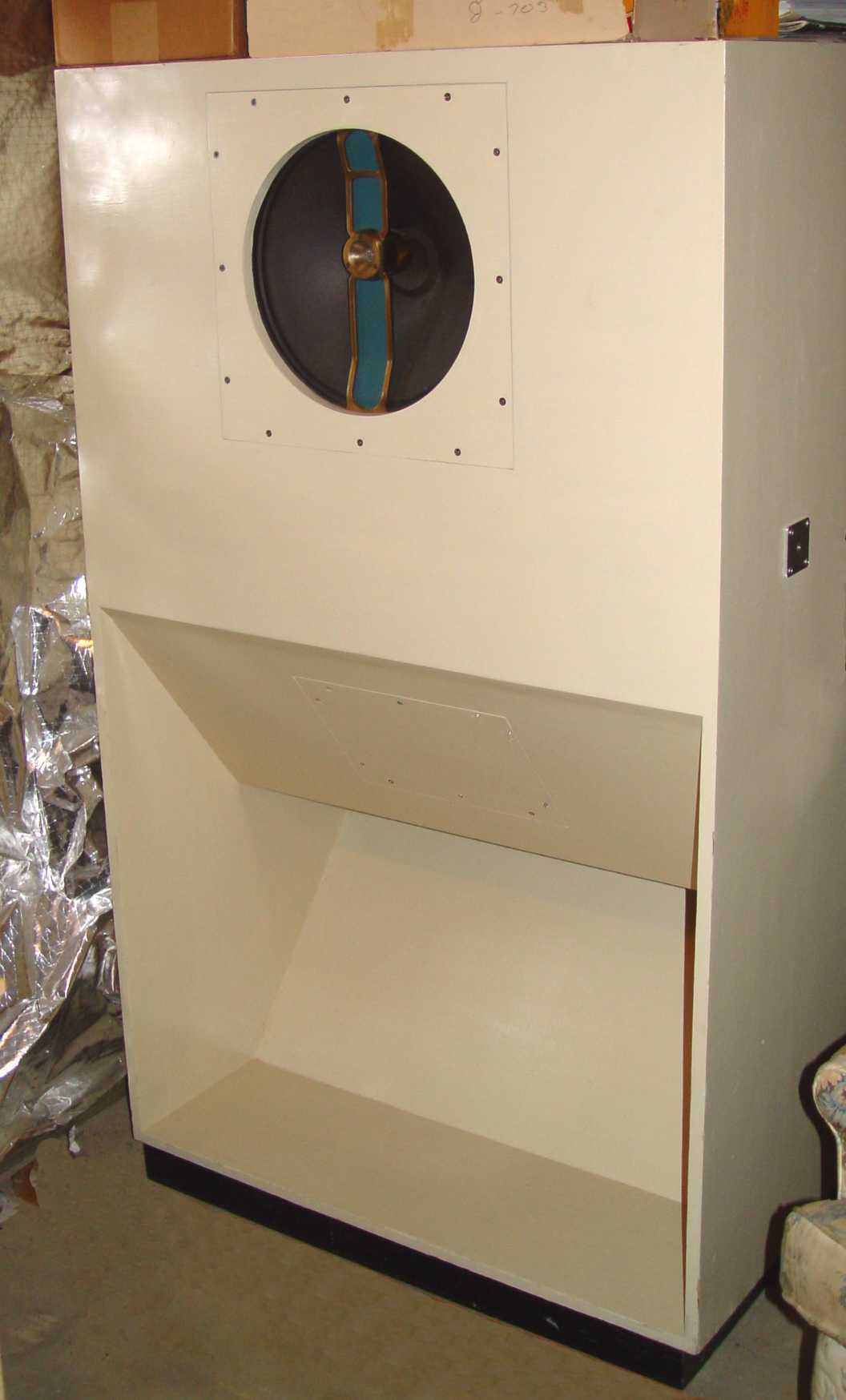
I have played both violin and viola in symphony orchestras for many years, and being an electronics engineer in my day job, the combination has generally dictated more than a passing interest in audio equipment. In the continuing search for sound that most closely approximates that which I hear in the concert hall, I built a pair of 250lb Jensen plywood horns several decades ago (one of these refrigerator sized behemoths is shown below.) These enclosures were intended by the Jensen engineers to be a no-compromise roll-around version of their 'prettied up' living room "Imperial" product, primarily for use in recording studios and sound labs. There is obviously nothing attractive about them...heh. At the same time, I have yet to find their equal in reproducing the orchestral program material that I listen to most of the time.
Ever since building them, I've been collecting data on the G-610 and G-600 reproducers intended to inhabit these plywood monsters. Unfortunately, I have found a dearth of such data on the web, so I thought it might be helpful for the occasional searcher to put all of these in one place, listed below. Their antecedents are long gone, so I apologize in advance if I have included anything without credit where it is due. I'll gladly give credit if the original provider will send me a note at the e-mail address shown in the home page link at the bottom of this page.
